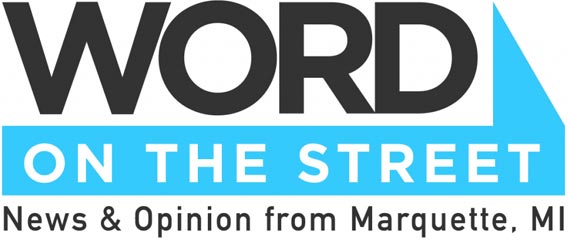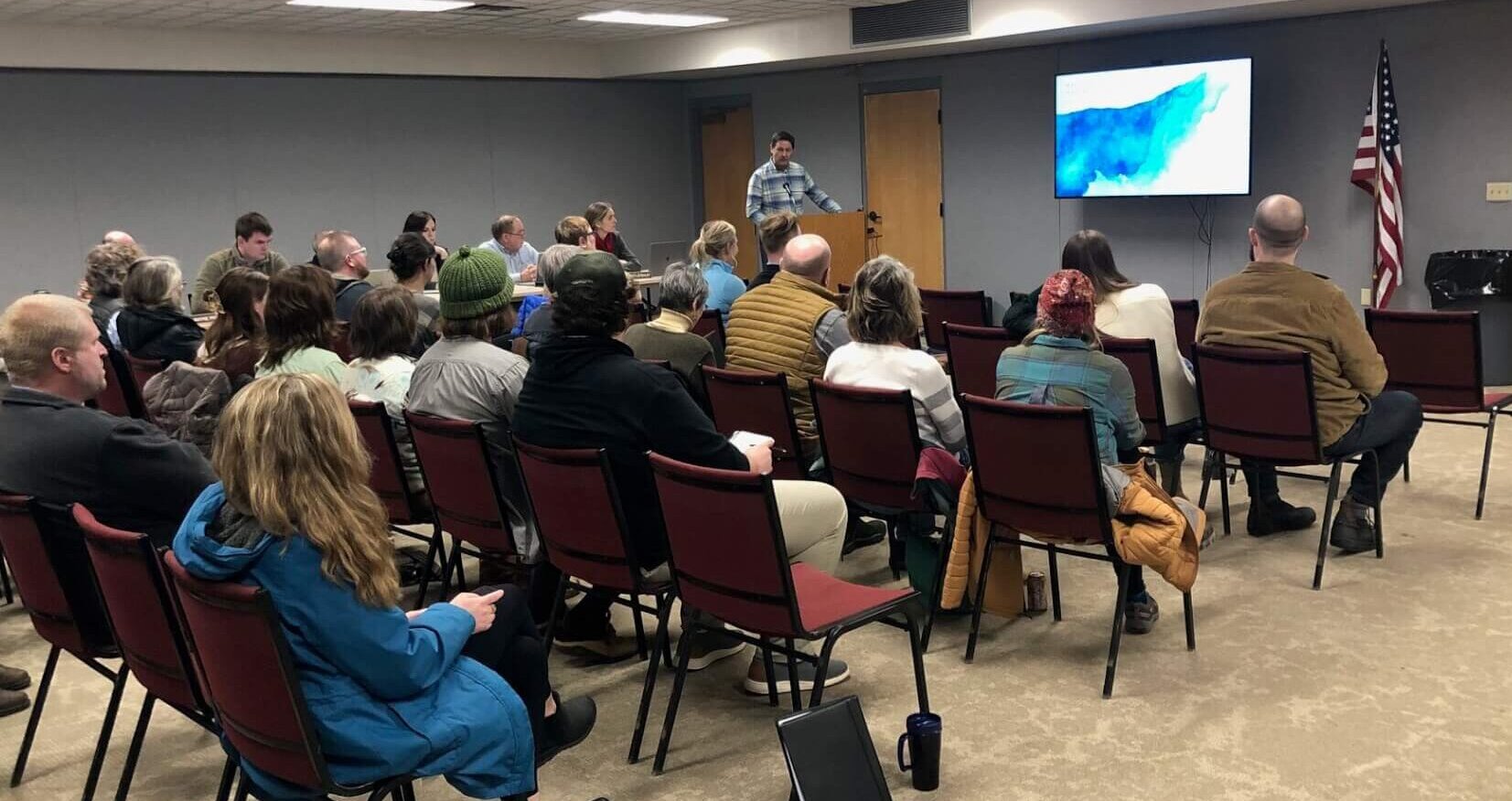INTERESTED COMMUNITY MEMBERS got a look into the future of Marquette Wednesday night when the Planning Department hosted a presentation of the new Master Plan draft.
Russ Soyring of Beckett & Raeder, a landscape architecture consulting firm, explained most of the whys and some of the hows included in the document city leaders will use as a tool for managing future growth and development.
The last update to the Master Plan took place in 2018, and the new one will look similar, but will also reflect changes in society in general and Marquette specifically. Much of the content reflects the opinions shared with city planners in the public input sessions that have taken place over the past months.
I won’t try to share everything we heard in the hour-long presentation, but there were a few points of emphasis every Marquette resident should be aware of. Like the push to de-emphasize our reliance on the automobile.
This is bigger than just taking away grandpa’s car keys. It seems our love of four-wheeled transportation is under attack and the battlefield is right here on the streets of Marquette. If you think the bike lane on North Third is an inconvenience to drivers, you might want to quit reading right here. If I had to characterize one of the evening’s recurring themes in a brief statement, it would be… “You’ve got two feet. Use ‘em.”
Okay, I may be exaggerating a little, because it’s not just walking that’s being encouraged. You can also ride your bike!
The Big Picture
Certainly the contents of the Master Plan touch on much more than just a move away from vehicular dependence. It’s a total re-envisioning of traffic patterns, neighborhood identities, housing, and the access to services we all need. The end result would be a community that no longer requires you to get behind the wheel to just pick up a loaf of bread.
In addition to the goal of forging a more walkable streetscape, the Master Plan draft also addresses a wide range of issues the city will face in the coming years, with land use being a big part of it. Soyring pointed out the plan will emphasize the creation of more tax revenue by identifying properties currently under or improperly utilized.
A stark example of that was illustrated in an overhead photo showing Tadych’s Marketplace off McClellan Avenue, surrounded by a large expanse of a near-empty parking lot. Soyring pointed out that parking lots do not generate the type of property tax revenue that could be realized with commercial or residential development. He wasn’t picking on Tadych’s as that was just one example of the many acres of developable property dedicated to parking lots across the city. And it shouldn’t be lost on you that less reliance on cars would lead to less reliance on parking lots. It’s all tied together.
Though the relationship between cars and pedestrians is a point of focus, most of the ideas included in the Master Plan are of the “big picture” variety. Like how to write our zoning ordinances to encourage more density in residential areas. And that we strive to preserve our history while we steward and cherish our natural assets. And that we continue to protect our neighborhoods and allow development that complements the community environment. And that our public transit system be upgraded to accommodate the significant percentage of our population without access to a car, or those who would rather keep it in the garage.
Like What?
There were specific ideas mentioned that at least one person in attendance… okay, me, found compelling. Like a walkway over South Front Street to allow people on foot to cross over to areas like South Beach, without putting life and limb on the line navigating a five-lane highway.
Or turning the intersection where West Washington meets the bypass into a traditional T-corner, to better utilize that space, while opening up more potential taxable property. Soyring also pointed out that such a change would make the entry point to downtown Marquette more inviting and easier to navigate. As residents, we take such exchanges for granted, but visitors, who may not be familiar with the area, are more likely to continue on at whatever excessive speed they’re traveling and miss downtown altogether. (Apparently MDOT likes to make it easier for travelers to get to their next destination, rather than stop and smell the roses where they are.)
The Voices of Youth
Soyring also cited statistics that show Marquette is a fairly “young” town. Our average resident is about ten years the junior to those in other comparable cities. Much of that is due to NMU, a sizable university in our modestly populated town, but regardless of why we’re younger, the fact is… we are.
Though a youthful population might mean louder music on summer nights, it can also mean a more engaged and enthusiastic generation of residents eager to see Marquette better prepared for the future.
A good example of that are two budding groups of citizens, driven largely by a Gen Z presence, meeting regularly to make the kinds of things happen that are included in the Master Plan.
One such organization is called Marquette Strong Towns. Recent NMU grad and engineer at Resolve Surgical Technologies, Demetri Kaltsas leads the local chapter of this nationwide movement focused on the development of cities that are financially strong and resilient. According to Kaltsas, the mission of Strong Towns is to “advocate for cities of all sizes to be safe, livable, and inviting.”
Marquette Strong Towns is open to all who share the desire to develop such a community. They meet on the first and third Saturday of the month at 11am at the Peter White Public Library.
A similar grass roots group, informally called the “Sustainability Coalition,” also features a core of younger residents concerned about things like housing, transit, and general livability. Local carpenter and group leader Jerry Kujawa says they’re working on specific events, like Motorless Monday, where community members are encouraged to use non-motorized transportation of the first Monday of the month.
Like Strong Towns, they are trying to change the mindset of doing things just because that’s the way they’ve always been done. “The hope is that actions will come after we raise awareness of what a truly sustainable town could look like,” says Kujawa, “and how this will make Marquette a more vibrant and healthier place to be.”
The Sustainability Coalition, also open to the public, meets every third Saturday at 10am at the Peter White Public Library.
Not a Done Deal
The Master Plan presented at Wednesday night’s meeting is just a draft, in some ways, a “wish list” of what our community could become. The Planning Commission will be responsible for its final version… the one they’ll present to the City Commission for its ultimate approval.
You can check it out, in its entirety, at marquettemasterplan.org. Also, there will be more opportunities for public input before the Planning Commission gives it the go-ahead. Watch for notices of future meetings.
The thinking here is that working to make Marquette a more walkable city, with higher density in our neighborhoods, better access to important commercial services, more efficient use of available properties, and better public transit, are all admirable goals. But… and it’s a big but, many of the changes to our urban environment will require budgetary commitments, and those come from, yeah, tax dollars. Sure, city officials will also be able to take advantage of state and federal grants, but generally speaking, we’re talking about investments made by residents. Some of those investments, like turning parking lots into functioning properties, would require a buy-in from private property owners, but as Soyring pointed out, “They’re gold mines for redevelopment”
Actually, the whole Master Plan will require a buy-in, from every citizen, from every neighborhood. If you want to have a say in where Marquette is going, taking advantage of upcoming opportunities to provide input is the best way to do it. As Soyring summarized… “Implementation will take the whole community.”


